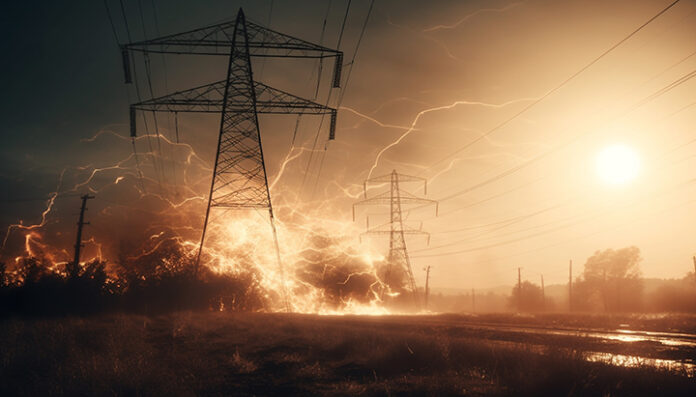ISLAMABAD:Pakistan’s power sector continues to struggle under the weight of a massive Rs1,614 billion circular debt burden, with billions in unpaid dues between power generation companies and fuel suppliers threatening the financial stability of the entire energy supply chain. Despite reported improvements that show a decline from Rs2,393 billion in FY 2024, the sector remains fundamentally strained by persistent payment failures and structural weaknesses.
The Power Division recently briefed the Cabinet Committee on Energy, chaired by Prime Minister Shehbaz Sharif on July 29, reporting the debt reduction and crediting improved management of power distribution companies along with continued efforts to reduce losses. Annual financial losses of DISCOs also reportedly decreased from Rs591 billion to Rs397 billion during the same period, according to official documents submitted in line with quarterly reporting requirements on billing, collections, and debt.
However, beneath these positive headlines lies a more troubling reality that reveals the depth of the crisis. During the meeting, Petroleum Minister Ali Pervaiz Malik highlighted that GENCOs No. 2 and 3 had failed to pay their arrears to critical fuel suppliers, creating a domino effect throughout the energy value chain. The scale of these unpaid dues is staggering: GENCO-III, the Northern Power Generation Company, owes Pakistan State Oil Rs156.7 billion for furnace oil supplies, comprising Rs65.7 billion in principal and Rs90.6 billion in financial costs, despite receiving payments from the Central Power Purchasing Agency that were diverted elsewhere instead of paying PSO.
Similarly, GENCO-II, the Central Power Generation Company, has accumulated Rs30 billion in outstanding gas payments to Sui Northern Gas Pipelines Limited, including Rs9 billion in principal and Rs21 billion in late payment surcharges. The company also owes Pakistan Petroleum Limited approximately Rs150 billion for gas supplies to its Guddu facility, with Rs93 billion in gas costs and Rs57 billion in late payment surcharges. This pattern of receiving payments from CPPA but failing to pass them on to fuel suppliers perpetuates the cycle of financial strain across the energy sector.
Government’s Plan
Recognizing the urgency of the situation, the government has developed a comprehensive roadmap to address the circular debt crisis through multiple fronts, including terminating IPP contracts, renegotiating terms with renewable projects and other independent power producers, securing waivers from state-owned generation companies, eliminating Late Payment Interest surcharges, and injecting fiscal resources. At the center of this strategy is a landmark Rs1.275 trillion bank financing arrangement designed to fundamentally reshape the sector’s cost structure by replacing expensive borrowing, including PHPL debt at KIBOR+2% and IPP payables with rates as high as KIBOR+4%, with significantly cheaper debt at KIBOR-0.9%.
| Description | Rs. Billion |
| Circular Debt – (as at Sep 2024) | 2,467 |
| IPPs Terminated | 87 |
| Negotiations with Wind and Solar IPPs | 79 |
| IPPs Renegotiated | 297 |
| Payable to Fuel Suppliers – not CPPA’s Liability | 96 |
| WAPDA/Govt./Hydel – doesn’t attract LPI or requested for waiver | 128 |
| CD post renegotiations | 1,778 |
| LPI Reduction | 196 |
| CD before Fiscal Budget | 1,582 |
| Fiscal Budget | 306 |
| Remaining CD to be financed by Banks | 1,275 |
The new arrangement is projected to generate annual savings of Rs200 billion and involves a consortium of major Pakistani banks, including Meezan Bank, Habib Bank Limited, National Bank of Pakistan, Allied Bank Limited, United Bank Limited, MCB Bank Limited, and eleven other institutions. The disbursement plan allocates Rs683 billion toward retiring PHPL liabilities, Rs280 billion for nuclear plants, and Rs220 billion for RLNG-based IPPs, while the remaining Rs720 billion gap will be addressed through renegotiated IPP terms and waivers granted to state-owned hydel plants.
To fund this restructuring, the government has introduced a Rs3.23 per kilowatt-hour surcharge, an expansion of the previous levy that only covered interest costs, as this new charge will service both principal and interest repayments. The plan also incorporates a fiscal allocation of Rs250 billion earmarked in the FY26 budget to support the restructuring process. Based on projected electricity sales, the surcharge is expected to generate approximately Rs342.8 billion annually, and after covering financing costs of Rs138.75 billion, the remaining Rs204.1 billion would be available for principal repayment, potentially clearing the entire obligation within six years, depending on prevailing KIBOR rates.
The need for swift action becomes clear when considering that some PHPL debt dates back to 2012 and has already been rolled over four times with multiple restructurings, underscoring both the chronic nature of the problem and the critical importance of current reform efforts.
While Prime Minister Sharif appreciated the reported progress and commended the Power Division and DISCOs, particularly LESCO, for their performance, the continued buildup of inter-entity arrears reveals persistent structural weaknesses that suggest the circular debt may be shifting rather than truly declining.
The situation highlights a fundamental challenge facing Pakistan’s energy sector: even as overall debt figures appear to improve on paper, the underlying governance and accountability issues that allowed hundreds of billions in rupees to be diverted from their intended recipients continue to threaten the system’s stability. The CCoE’s decision to issue commendation certificates acknowledges improvements while the underlying data, verified by the National Electric Power Regulatory Authority, reveals that the system remains fragile and that success of these ambitious reforms will ultimately depend on addressing not just the financial mechanics of the circular debt, but also the systemic issues that perpetuate the cycle of non-payment across the energy value chain.




